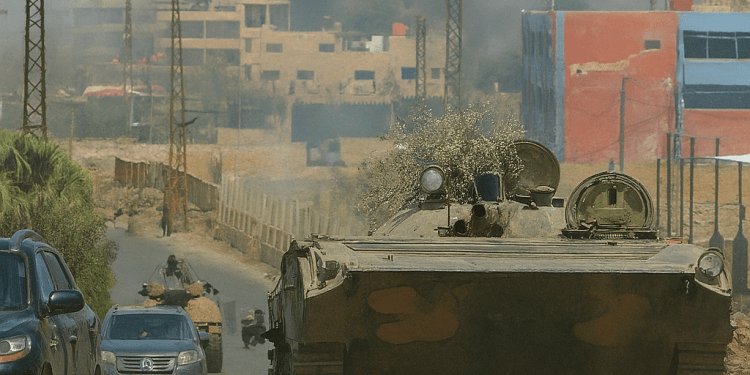Overview of the July 2025 Operation
During July 15-16, 2025, Israeli forces conducted extensive airstrikes on Syrian military sites located in Damascus and Sweida Province. This operation came in response to worsening ethnic conflict in Syria, where Druze communities faced threats from both government forces and extremist groups. The Israeli intervention marked the most significant action in Syria by Israeli forces in recent times.
What Triggered Israel’s Latest Airstrikes on Syria?
July 2025 Israel-Syria Military Strikes | Druze Protection Airstrikes
Multiple violent attacks in Sweida led to over 250 deaths as Druze communities clashed with Bedouin tribes. The Syrian government intensified ethnic cleansing threats against Druze civilians, using armored vehicles and artillery shells in the area. Israeli airstrikes targeted key locations including:
- Syrian Defense Ministry headquarters in Damascus
- Military convoys near Sweida
- Artillery positions attacking Druze villages
Israel declared the operation followed a preventive defense strategy to safeguard Druze allies in the Golan Heights and southern Syria.
Who Are the Druze and Why Is Israel Protecting Them?
The Druze are an ethnoreligious minority group originating from Ismaili Islam in the 11th century. Sweida (Jabal al-Druze) is home to around 700,000 Druze in Syria, while approximately 150,000 Druze live in Israel, where they serve in the IDF and show military dedication.
Israel’s protection combines strategic interests with historical and cultural ties. Druze support has been pivotal in the Golan Heights since its annexation, and the Druze continue to display pro-Israel loyalty.
Why Did Israel Intervene Militarily?
The Israeli government cited three main reasons for the intervention:
- Humanitarian Protection: Preventing a massacre of Druze civilians.
- Border Stability: Ensuring violence doesn’t spill into Israeli territory.
- Strategic Signaling: Warning Iran and Hezbollah against using Syria to threaten Israel or its allies.
Details of the Israeli Airstrikes
The operation included:
- Precision-guided missile strikes on command facilities in Damascus.
- Drone strikes on mobile artillery targeting Druze villages.
- Stealth jet raids on supply convoys near Sweida.
Syrian military facilities were severely damaged, with local reports indicating over 100 deaths among military personnel and extensive infrastructure destruction.
Geopolitical Reactions and Consequences
- United States: Called for restraint but privately backed Israel’s actions.
- Russia: Condemned the strikes as sovereignty violations.
- Iran: Threatened retaliation via Hezbollah.
- Turkey and Arab League: Condemned the strikes citing regional destabilization.
- United Nations: Called for ceasefire talks while acknowledging a humanitarian crisis in southern Syria.
Strategic Analysis: What’s Next?
Short-Term:
- Further Israeli strikes likely if Druze communities remain under threat.
- Reduced Syrian military presence in southern regions.
Medium-Term:
- Possible creation of a Druze Protection Zone near the Golan Heights.
Long-Term:
- Israel’s cross-border engagement policy may expand, focusing on minority protection.
- Increased risk of Israel-Iran proxy conflicts in Syria and Lebanon.
Conclusion
The July 2025 Israeli military strikes in Syria highlight the complex intersection of border security, minority protection, and geopolitical tensions in the Middle East. While the Druze gained immediate protection, the region faces heightened risks of escalation, making future developments uncertain in this volatile landscape.




